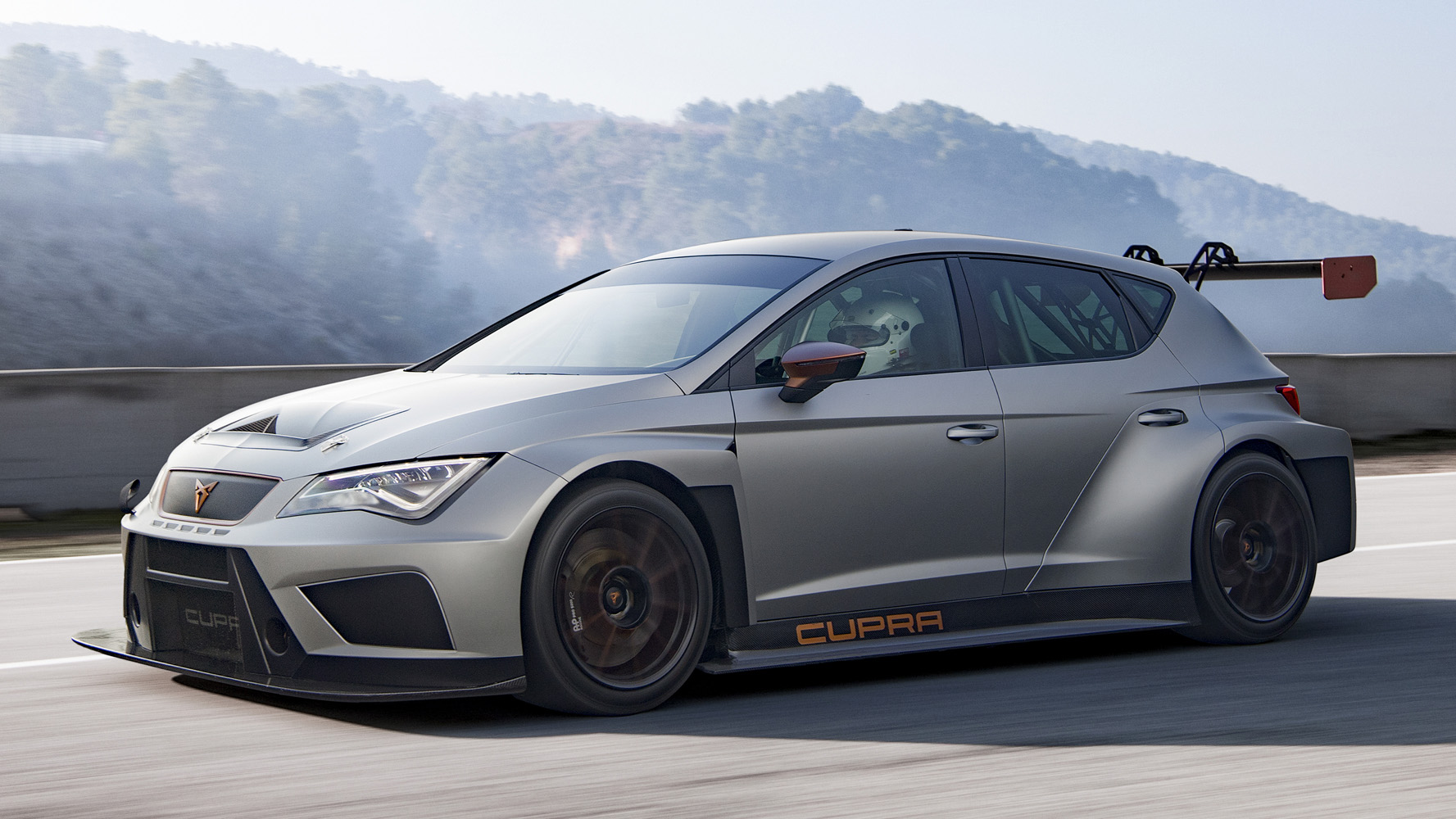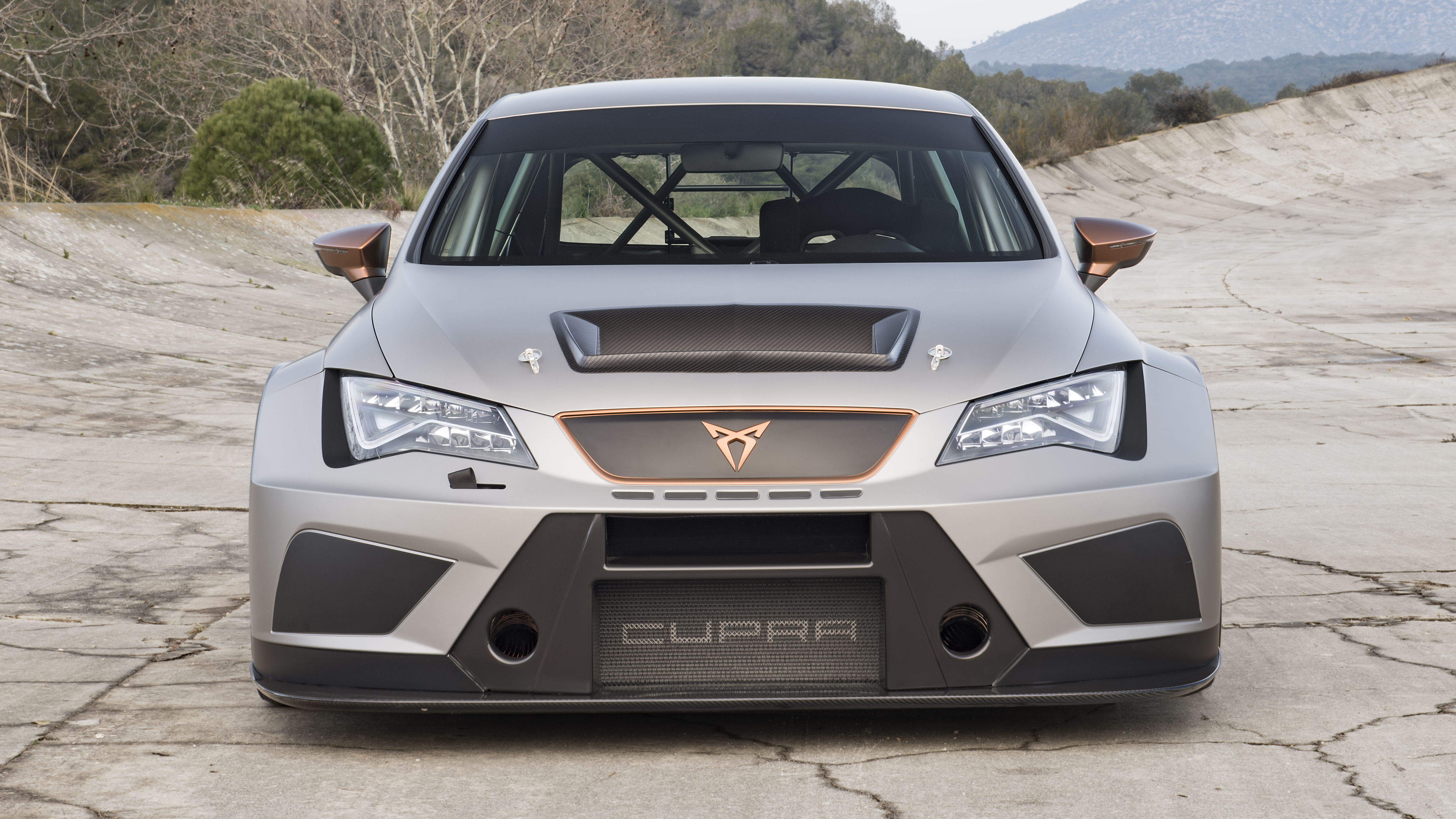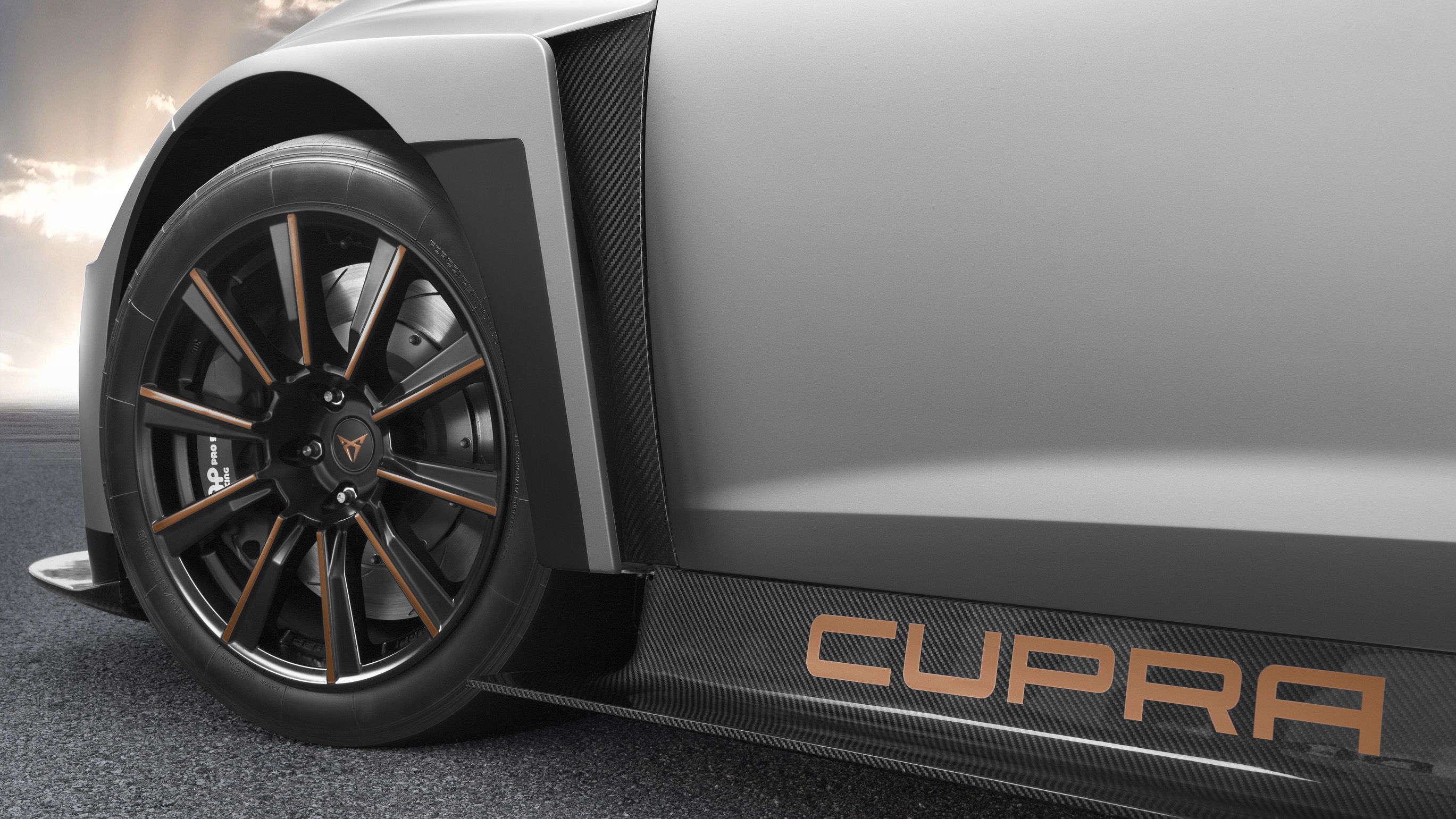
Cupra TCR review: 350bhp racer driven
That’s a funky-looking Seat.
All right stop, collaborate and listen. This isn’t a Seat. This is a Cupra – the new sporty standalone sister company to Seat.
Wasn’t Cupra just a badge for the fast ones?
Not anymore. Seat recently separated Cupra as a sub-brand. No longer just branding for the ‘fast one’ in the Seat range, Cupra is going it alone to sportify Seat’s range of family hatches – and crossovers – and keep on winding up Renaultsport, not to mention the VW overlords and their precious GTIs.
Interesting. What exactly will a Cupra be?
We’ve got to be honest, we’re still trying to work out the answer to that, too. The only four-wheeled thing we've seen thus far outside of this race car is the 296bhp Cupra Ateca: a family-friendly small SUV with hot hatch performance.
But, being a modern Insta-friendly brand, Cupra will be more than just cars. It’s currently purporting to be an all-encompassing chichi lifestyle brand that includes; electric mountain bikes, sunglasses, carbon fibre bracelets, handbags, tie-ins with Ducati and baseball caps. All these things and the cars will be fronted with a new logo (one that looks like a transformer tattoo) and lots of contrasting copper. Lots of contrasting copper.
Tell me about the car - I don’t care about carbon fibre bracelets.
Good, because neither do we. What we have here ladies and gents, is the new Cupra TCR. It’s the latest stripped out racer and evolution of the Seat Leon WTCC car, the forefather and seed that helps grow the ultra-competitive, relatively low-cost TCR racing series.
TCR? What’s that?
Top Gear
Newsletter
Thank you for subscribing to our newsletter. Look out for your regular round-up of news, reviews and offers in your inbox.
Get all the latest news, reviews and exclusives, direct to your inbox.
A racing phenomenon. It’s the fastest-growing race series in the world, one inspired by the GT3 customer racing platform. It’s an entry-level cost-effective tin-top series for front-wheel drive, saloon or hatchback performance derivatives of mainstream production cars. All have to be powered by turbocharged 2.0-litre petrol engines producing around 350bhp and no more than 309lb ft of torque.
It’s a popular recipe. There are 225 TCR races worldwide a year split over various countries and regions. Some countries have seen grid size doubled in a season, proving that there’s a demand for it. Shows in the number of eligible cars too. What started out as a few manufacturers has now grown to a field of Alfa Romeo, Audi, Ford, Honda, Hyundai, Kia, LADA, Peugeot, Opel, Renault, Seat, Subaru and Volkswagen - with a number of other brands rumoured to be working on developing cars too. But Seat – ahem, we mean Cupra – was there first.
How so?
The TCR format was based on the old Seat Leon race cars that proved to be very popular and competitive as a single-make series. Being based on Volkswagen Group’s venerated MQB architecture, Cupra now builds all the VW-based cars (the Audi RS3 LMS TCR and Golf GTI TCR) at its factory just outside Barcelona. Having been involved since before the TCR championship's debut season in 2015, means that it’s made an incredibly reliable and cost-effective race car.
Looks cool.
Doesn’t it just. Properly aggressive and functional. But with the bodyshell and suspension of the production vehicle retained (fully-adjustable McPherson up front, multi-link in the rear), plus the standard gearbox, costs are kept down.
The car arrives at the factory as a standard Leon but is quickly stripped down to the shell and modified for safety. The transmission tunnel is hammered in to make sure the driver is more central in the car to protect against side impacts and a hefty roll-cage is welded in. Then a race seat is plonked as low as it can so that all that is left are some pedals, a steering wheel, a minimal LCD display and somewhere to sit – all you need for a race car.
Outside, a new aero package is fitted that includes a series standardised carbon fibre front splitter (one of only a few carbon parts), rear ‘grasshopper’ spoiler (for more downforce), huge plank-like side skirts and an aggressive front end with added cooling. Thanks to fully adjustable suspension, it sits a lot lower and lightweight wheels wrapped in slicks fill the swollen arches. And, we have to say, the grey and copper tones work well on the bloated bodywork.
What’s it like to drive?
A lot easier than you think. Well, once you’re in it that is. If you’d paid for the car with your own money, you’d be able to have the seat where you want it. I didn’t. So I had to sit where Spanish touring car ace Jordi Gené sits. Which is about six inches closer to the bulkhead than I’d like.
Planted deep in the chassis, halfway along the car, your shoulder is level with the B-pillar. HANS device on and strapped down by a full racing harness in the wraparound seats, visibility isn’t great and shorter peeps will struggle to see over the dashboard (Jordi sits on a Nomex scatter cushion) but you sit in the thing, so feedback through your bum is positive.
There are actually two gearboxes available; a DSG (exactly the same as the road car) or a fancy SADEV six-speed sequential. The sequential is half the weight of the DSG but £15k dearer. If you're new to racing or thinking about competing in endurance events, the DSG is perfect for you; it’s easier to use and doesn’t need to be taken apart every 2,000km like the sequential.
I sampled the DSG. Foot on the brake and gearstick slotted into ‘D’, then across to manual, leaving the pit lane the width of the thing becomes apparent. All that extra bodywork sees it swell to just under two-metres wide, something worth noting if you’re side-by-side going into turn one.
With a pedal box set up for left-foot braking, burying your right foot equates to lots of noise. There’s no sound-deadening and a new exhaust, so it’s loud. Really loud. A metallic rasp reverberates around the cabin and a musket of noise fires from the glowing twin exhausts with each pull of the steering-mounted paddles. It feels fast, but not ballistic in a straight line. The DSG gearbox is also incredibly smooth, a bit too smooth for a race car. There’s no violence to it which helps the mid-corner balance, but we’d prefer something more visceral so would opt for the sequential.
What’s it like in the corners?
It’s in the bends where the TCR turns from a hot hatch on roids to a proper race car. Shod in slicks and on warm Spanish tarmac with an aggressive toe and camber setup, the speed you can carry in and around corners is remarkable.
It starts with the braking. 379mm front and 272mm rear with six-piston callipers, help bring it to a stop. You’ve got to stamp on the pedal but when you do and the slicks bite into the ground you can start to brake later and later. Balance is adjustable, but the trick is to get as much braking done up to and into the start of the corner as possible. This helps rotate the car while maintaining speed. With such a light rear end and potentially cold tyres, if you’re aggressive it’ll give you an armful of oversteer on turn in, and if you’re not quick with the steering, it’ll completely swap ends. Trying to balance it on this knife edge is addictive, and when you do, you’ll see your lap times drop.
Unlike previous cars, there’s an electronic steering rack with an increased steering angle. Good for the tight, first-gear hairpin at Seat’s test track in Castellolí. The steering is incredibly light which is good for endurance races but lacks feedback of what’s going on. With a remapped engine and 350bhp, power understeer is abundant if you’re heavy on the right pedal out of a corner. You have to feather it out of corners to get the best. But in the high-speed stuff, it’s addictive – so planted and giving you the ability to spear through corners with much more aggression and ease than a road car.
How much is it?
As race cars go, the cheapest way into a factory customer car you can get. For a DSG car, around £80,000. For a snazzy sequential version, just under £95k. Of course, some customers will add a full racing team, trucks, catering and crew. That’ll see you sink about £150-£180k. Then you’ve got the £15k entry fee into the UK six-round TCR series.
But, if you’re into track days, you can also think of it like this. At this money, it’s about the same price as some track-day specials. Y’know, Porsche GT3s or, if you’re a bit more serious, a BAC Mono. Both will set you back over £100k, eat the same consumables and aren’t inexpensive to religiously pound around a track. The Cupra, in DSG form, looks like decent value next to that. Alright, it’s not road legal, but you have the added element of being able to compete in some of the world’s best endurance races. Or your own series. Which is immense fun, and worth saving up for.
Featured

Trending this week
- Car Review
Porsche 911 GT3 (992.2)






